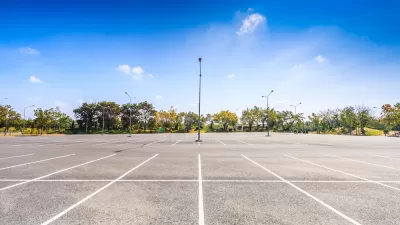Housing advocates praise the city’s move to eliminate single-family zoning by legalizing triplexes on single-family lots, but that isn’t why housing construction is growing.

Christian Britschgi, writing in Reason, claims that the construction boom in Minneapolis is unrelated to the city's decision to remove single-family zoning. “Housing production is up, and rents do indeed appear to be falling. But the effects of Minneapolis' particular means of eliminating single-family-only zoning, and allowing up to triplexes on residential land citywide, have been exceedingly modest.”
Britschgi writes that “from January 2020 through March 2022, Minneapolis approved 62 duplexes and 17 triplexes, according to data collected by the city's Department of Community Planning and Economic Development (CPED). Exactly half of the duplexes and 14 of the triplexes were built on lots that were once zoned for exclusively single-family development.”
“But these two- and three-unit developments still represent a tiny fraction of the roughly 9,000 housing units the city permitted during that same time period.” Emily Hamilton, a housing policy researcher at George Mason University's Mercatus Center, says other constraints prevent the widespread construction of duplexes and triplexes. “There are also restrictions on how large that lot has to be, how large that structure has to be, how much parking is required, and how far a structure has to be from its lot line.” Changes to these policies, says Britschgi, have a more significant impact on new housing production. “[Jason Wittenberg, a planner with CPED] credits the city's elimination of parking minimums—which had typically required one parking spot per housing unit—with facilitating increased construction of smaller apartment buildings.”
Like Minneapolis, cities around the country are moving to reduce or eliminate minimum parking requirements to encourage denser transit-oriented development and bring down the cost of housing production.
FULL STORY: Eliminating Single-Family Zoning Isn't the Reason Minneapolis Is a YIMBY Success Story

Alabama: Trump Terminates Settlements for Black Communities Harmed By Raw Sewage
Trump deemed the landmark civil rights agreement “illegal DEI and environmental justice policy.”

Planetizen Federal Action Tracker
A weekly monitor of how Trump’s orders and actions are impacting planners and planning in America.

The 120 Year Old Tiny Home Villages That Sheltered San Francisco’s Earthquake Refugees
More than a century ago, San Francisco mobilized to house thousands of residents displaced by the 1906 earthquake. Could their strategy offer a model for the present?

Ken Jennings Launches Transit Web Series
The Jeopardy champ wants you to ride public transit.

BLM To Rescind Public Lands Rule
The change will downgrade conservation, once again putting federal land at risk for mining and other extractive uses.

Indy Neighborhood Group Builds Temporary Multi-Use Path
Community members, aided in part by funding from the city, repurposed a vehicle lane to create a protected bike and pedestrian path for the summer season.
Urban Design for Planners 1: Software Tools
This six-course series explores essential urban design concepts using open source software and equips planners with the tools they need to participate fully in the urban design process.
Planning for Universal Design
Learn the tools for implementing Universal Design in planning regulations.
Clanton & Associates, Inc.
Jessamine County Fiscal Court
Institute for Housing and Urban Development Studies (IHS)
City of Grandview
Harvard GSD Executive Education
Toledo-Lucas County Plan Commissions
Salt Lake City
NYU Wagner Graduate School of Public Service





























